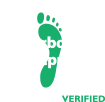A critical decision in completing a church/school activity center or gym project is the type of multi-use athletic flooring to install. Today’s most preferred options include tile, synthetic surfaces, and maple. The key criterion to consider is the variety of activities the space is likely to host. If the primary use is athletic, a maple gym floor may be the best match as it provides the recognized best athletic surfaces for basketball and volleyball. Wood systems are available as floating floor systems or more costly and complex anchored floor systems. Maintenance for wood floors is more involved, but all floors require maintenance and wood floors deliver dramatically superior life cycles versus other athletic surfaces.
If usage will be more varied, with activities including street shoes, chairs, and tables, other surface options should be considered in addition to wood. Many synthetic choices have emerged in recent decades. Interlocking tiles became popular as a low-cost, convenient way to spruce up a room, particularly as a retrofit to replace an existing surface. One attractive feature of the interlocking tile is its ability to be placed over slabs with higher moisture levels than with wood or any other synthetic options. The industry norm for acceptable moisture vapor transmission levels in the concrete below flooring is about 3-5% – occasionally it can be difficult to achieve that benchmark in some conditions without a long waiting period or finding a chemical vapor barrier to block moisture transmission from the slab. Tiles can be a bit “noisy” compared to other options and if liquids are spilled, the many seams present a genuine cleanup challenge.
Other flooring options include a wide variety of prefabricated rolled/sheet goods, and numerous poured-in-place urethanes. Prefab floors fall into two main types: rubber and PVC. Rolled products are quite “uniform” in nature, relatively easy to install and available in many colors and patterns. Vulcanized rubber floors can offer multiple performance layers to enhance shock absorption and longevity. Their costs can equal or exceed maple. Their PVC counterparts share many similarities, but have a plasticizer component that needs to be considered, as they can leech out over time and cause the floor to both shrink and harden. A further drawback to these and other prefab floors is their seams – not just an aesthetic concern, seams can evolve into maintenance and safety issues. When these surfaces need to be refurbished, they must be removed and disposed of, the slab cleaned and prepped for a new, full thickness prefab replacement.
For more than twenty years, poured-in-place self-leveling urethanes were applied directly over the concrete substrate; adhesion was a concern and further work was done to enhance elasticity and shock absorption.
Synthetic sports floors typically employ a recycled-rubber underlayment as a cushioned platform to pour the self-leveling urethanes over, instead of the much firmer concrete. This also makes these floors a great fit for “green” construction initiatives. The typical-size multi-activity floor incorporate tires that would otherwise go to a landfill.
After gluing down the rubber underlayment (in thicknesses based upon desired cushioning and budget) the mat is then sealed, usually followed by a two self-leveling pours of urethane. A pigmented urethane coating is then roller-applied; game lines and artwork complete the floor installation. Putting a clear maintenance coat over the finished surface ensures a well-protected, easy-to-clean floor.
Seamless construction is one of the biggest reasons for the popularity of poured urethane along with its ability to be refurbished in 12-15 years with an overpour “facelift” at HALF the cost of the original installation.
What are some of the general considerations in choosing the best floor for a project? While athletes want optimum “give” and slide characteristics to protect ankles, knees, and hips that wood and premium synthetic products offer, those who care for the surfaces look for a product that is impervious to damage – so use and maintenance need to be considered. Using lifecycle guidelines to help develop cost-over-time predictions, a properly cared-for wood floor should last 60 years with annual rescreening and periodic sand/refinishing. Their synthetic counterparts usually need some refurbishing in 12-15 years and will require either total replacement or an overpour at that time. Maintenance is also a prime concern given common tight budgets and limited manpower. A walk-behind scrubber is a good investment, making the routine cleaning process go more smoothly and, with other attachments, can be used in other areas of a facility.
For more information on flooring options for gyms or activity centers contact Action Floor Systems today.

























